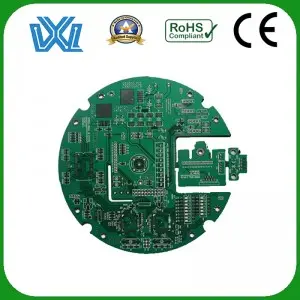In the fascinating world of electronics, the PCB or Printed Circuit Board is an important component that is often overlooked by the average user. Understanding the meaning and significance of a PCB is essential to grasp the complex workings of electronic devices. In this blog, we’ll delve into the world of PCBs, revealing their purpose, design, and importance in modern electronics.
1. What exactly is PCB?
A printed circuit board (PCB) is a flat panel made of non-conductive material, usually fiberglass, used to connect and support various electronic components. These components are soldered to the board, allowing electrical current to flow and ensuring the device operates properly. PCBs are used in most electronic devices, from smartphones and computers to home appliances and cars.
2. The significance of PCB in the electronic field:
The fundamental purpose of a PCB is to provide a solid and reliable platform for the integration of electronic components. PCB design and layout are carefully planned to ensure optimal performance, efficient signal transmission and space utilization. Without a PCB, electronic components would be messy and unreliable, resulting in erratic functionality.
3. PCB construction and design:
PCBs have a multi-layer structure, with each layer serving a specific purpose. The innermost layer is called the substrate and provides mechanical support for the circuit board. Deposit a thin layer of copper on top of the substrate to form conductive traces. These traces act as current paths, allowing components to communicate with each other.
To ensure that the components are securely mounted, pads are added to the PCB surface. These pads serve as connection points for various electronic components such as resistors, capacitors, and integrated circuits. The design process involved a delicate balance between functionality, size constraints and cost-effectiveness.
4. Manufacturing process:
Manufacturing of PCBs involves multiple steps, including design, manufacturing, and assembly. Once the design is completed using specialized computer-aided design (CAD) software, the manufacturing process begins. It typically involves printing circuit patterns onto a copper-clad board, drilling holes for through-hole components, and using automated machinery to mount the components onto the board.
5. Progress in PCB technology:
PCB technology has evolved significantly over the years, becoming more compact, efficient and environmentally friendly. The introduction of surface mount technology (SMT) has facilitated the production of smaller, thinner PCBs, enabling the creation of stylish, portable electronic devices.
Additionally, advancements like flexible printed circuit boards (circuit boards that can be bent or folded) have revolutionized the wearable technology industry. Flexible PCBs improve durability and space utilization, making room for innovative designs and applications.
Printed circuit boards (PCBs) play a key role in the functionality of our everyday electronic devices. From smartphones to cars, understanding what a PCB is helps us understand the complexity and technical prowess behind these devices. PCBs not only provide stability but also pave the way for further developments in the field of electronics.
Post time: Sep-20-2023

